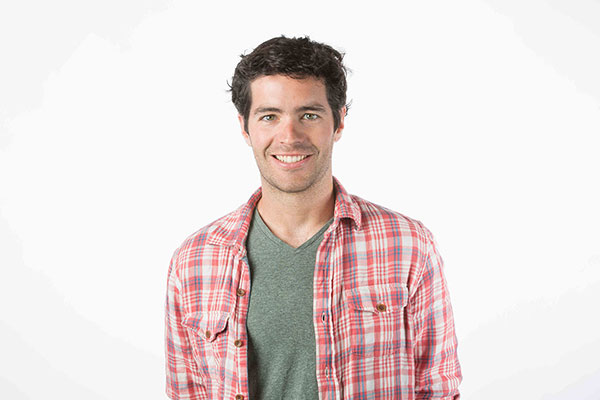WHAT MAKES A RUNNER GREAT ON TRAILS?
By  Dan Feeney
Dan Feeney  Kate harrison
Kate harrison
Follow on ![]() @Dfeeney31 and @running_geek
@Dfeeney31 and @running_geek

Quick Takes
- Being a great runner on the road or track does not guarantee success on trails
- Practicing the technical and strategic parts of running on trails is more important than training for flat surfaces
- Spending time in the weight room could help enhance both up and downhill running

Dan’s Take
I was a steeplechaser in college, a race reserved for those who make up for slower speeds with the athleticism to jump over three-foot-tall barriers 35 times over 3000 meters. The ability to maintain running form over obstacles predisposes steeplechasers to do quite well on the trails. Trail racing is all about maintaining momentum and efficiency over undulating terrain rather than locking into one pace. With trail running booming in popularity, scientists are keen to identify the physiological and biomechanical determinants of success.

Kate’s Take
I have come to realize that trail running is a vastly different sport than road running. Sure, there is considerable cross-over in skill, as aerobic fitness is foundational across all surfaces. However, the cardiovascular fitness gained from road running will only take you halfway to success on the trails. Trail runners also need a level of technical skill, muscular strength, and race savvy not required on relatively flat, smooth road surfaces. After reviewing our personal experiences and emerging research on the topic, we want to share a few insights about how runners can maximize their potential on the trail. Plus, training for the trail may also make you faster on the road!

BOA’s Take
Trail running fits naturally with our mountain heritage. We believe the fit of shoes is vital to meet the unique demands of trail running. Within our Performance Fit Lab, we use laboratory and field-based protocols to rigorously evaluate trail footwear and discover new ways of quantifying fit when running across the most technical of terrain.
.jpg)
Research on the Topic
While we care deeply about optimizing footwear for you to rip down the trails, we acknowledge that footwear is not the only consideration for runners transitioning from the road. Our understanding of the skills and training needed to specialize in the mountains continues to grow as participation and professionalism in trail running increase. Three primary factors differentiate trail running from traditional track and road races. Athletes need to be ready for steep slopes, technical terrain, and duration.
Uphill and Downhill Running
It is relatively easy to forecast performance in road races. If you plug an athlete's maximal aerobic capacity (VO2 max) and running economy into a calculator, you can usually predict performance within a small range. While VO2 max and economy still factor into success in trail racing, you must also consider information about the course and the runner to predict performance accurately. There is good news for road runners who want to explore the trails. There is a strong positive relation between running economy on level, downhill, and uphill runs, meaning the years of hard-earned fitness on the roads will help launch you into the world of trail running.
Unlike the mountain goats who float up 20% gradients, human runners distinguish themselves in downhill sections. Of course, if you lack the agility required for the descent, strong climbing skills will allow you to open a lead to defend on the downhill. But how do you improve your downhill running performance? A recent study from the University of Strasbourg shows that runners can kill two birds with one stone by lifting heavy weights in the gym. A runner's maximum half-squat strength is a key predictor of both uphill and downhill run performance. Two high-intensity gym sessions per week can significantly improve running economy and provide the strength required to bomb down the steepest of grades.
Since we both come from track backgrounds, we prefer the climbing portion of races. For many road converts, the critical nature of climbing strategy is a hard-learned lesson. When I first started trail running, I stubbornly refused to walk until I realized sometimes it is faster and more economical on steep terrain. While we do not have concrete recommendations on when to hike versus run uphill, Jackson Brill is hard at work on this problem. He is exploring the influences of energy cost, heart rate, and muscular effort on steep terrain. For now, practical experience and personal choice may be the best strategy to find the optimal walk/run balance during steep climbs.

Technical Terrain
As we noted above, once runners attain a certain fitness level, downhill running separates the winners from the rest of the field. To predict downhill running performance, scientists evaluate maximal strength, the velocity a runner can run at their VO2 max, and leg musculotendinous stiffness. However, the relative importance of these factors depends on the type of downhill. A technical and steep descent places more emphasis on strength and leg stiffness. VO2 max, on the other hand, is relatively unimportant. We hypothesize that, in addition to strength and stiffness, athletic skills like reaction time and eye-foot coordination are key determinants of technical downhill performance. And a fearless mentality probably helps, too.
Duration
When evaluating factors that influence performance, race length is a significant consideration. The longer the race, the more what predicts success becomes a mystery. While the peak velocity runners can reach during a VO2 max test predicted 50 and 80-Km trail racing performance, no physiological factors predicted 160-Km performance. Psychology may play a more significant role in persisting through the challenges that will inevitably pop up over hours and days of running. Lastly- and unsurprisingly- nutrition is also a crucial factor in longer-distance races. During a trail marathon, consuming 120g/hour of carbohydrate offered better performance and recovery than consuming 60 or 90g. Any experienced runner will tell you that stomaching this much fuel during an intense run takes a lot of practice.

How We Test
We cannot do the training for you, but we are constantly working at BOA to deliver solutions that allow you to maximize your potential. We understand that performance on the trail is unique and deserves a specific kind of testing. Therefore, to ensure our fit systems excel in their intended environment, we combine testing in our lab with testing on the trail. In the lab, we combine running on the treadmill with rapid cutting maneuvers to simulate how trail runners traverse rock gardens. We evaluate how various fit configurations affect speed and agility. We also attach mobile sensors to the body and monitor runners on varied outdoor trails to assess how individuals respond to unpredictable and unstable surfaces at high speeds. With a well-fitting shoe, your quick reactions transfer more effectively through the midsole to the ground, ensuring you can move confidently through whatever terrain you encounter.
For Athletes, Coaches, and Retailers
Most runners live for aerobic training – they head out the door every day eager to tackle highly aerobic activities. Practicing the unique aspects of trail running is critical to translating that aerobic fitness into smoothly gliding over mountainous terrain. Like with any sport, you need to put in the time. For trail running, spend time climbing to get a feel for when you should hike versus run, and get comfortable moving quickly over rocks and roots. Spend time descending as well, training your course vision. Build confidence in selecting the most secure places to plant your feet. You can improve these skills by spending time in the gym building maximal strength and power. A shoe with excellent traction and fit will also allow you to get the most out of your skills by transferring your force more effectively to the trail.
You can find us on Twitter @Dfeeney31 and @running_geek